The Yellowstone volcano is the largest known volcano globally, and it has been feeding magma for 2 million years. The Yellowstone Caldera is a product of a large-scale crust collapse after three so-called ultra-Plinian or super-volcanic eruptions-significant explosive events that erupted hundreds to thousands of cubic kilometers of magma. These volcanic eruptions happened roughly 2.1, 1.3, and 0.64 million years ago, respectively. Not only is Yellowstone the largest hydrothermal system in the world, but it’s also the largest one!
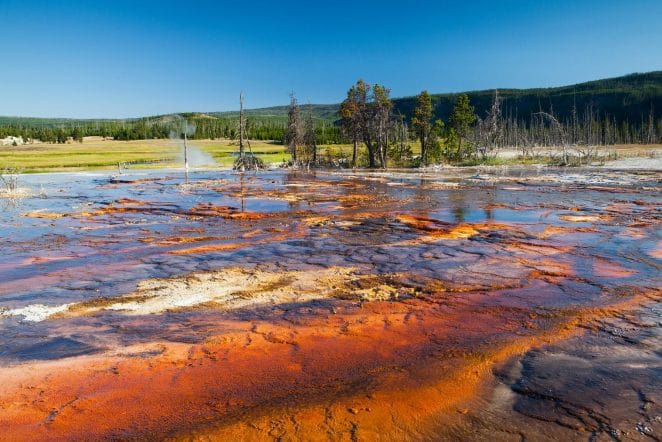
What is a caldera, and what are the risks of Yellowstone becoming one?
After a volcano’s cone collapses during an eruption, enormous craters are formed, known as calderas. Caldarium and cauldron are two additional names for the term caldera, which in the past was used to describe volcanoes in which the magma appeared to erupt through a hole in the crust of the Earth.
The risk of Yellowstone becoming a caldera is extremely low: the chance of an eruption that would produce enough pressure to trigger such an event in the next few 100,000 years is estimated at one percent. However, geologists have established that giant eruptions are possible for some volcanoes-so it’s not impossible. If there were a significant eruption, the caldera could be much larger than the current one.
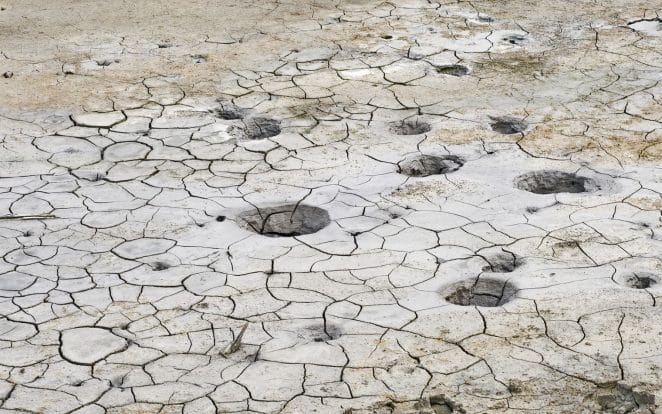
How does an eruption happen when there’s no magma insight?
The most recent eruption at Yellowstone happened 640,000 years ago, and it was the largest of those three. But there’s no yellow magma in sight! How does an eruption happen when there’s no visible yellow magma?
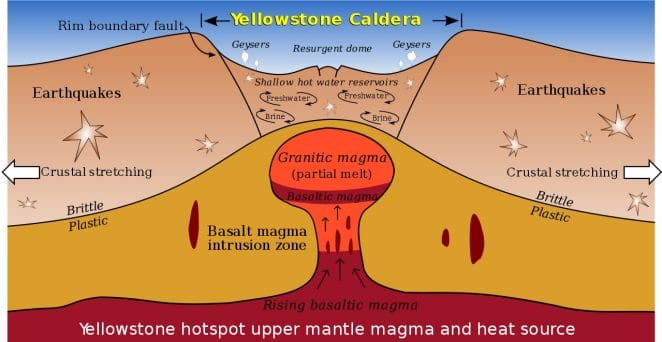
There are two possibilities: sometimes the magma is so deep below the surface that we can’t see it because light can’t penetrate deep enough. The other possibility is that yellow magma mixes with water, forming a sticky substance called lahar (a type of mudflow). Lahars are much more explosive when they break through barriers and become yellow-magma rich.
Why do scientists think that Yellowstone will erupt again soon?
Yellowstone is an active volcano, which means that it’s been erupting throughout the years. Tiny earthquakes and ground deformation so far have been detected in Yellowstone, but scientists are constantly monitoring the area to see any changes. One of these possible signs of eruption would be rapid inflation of hydrothermal features like geysers or pools of boiling water. It is still unclear if we already see such changes, and scientists claim that the evidence they have so far might indicate a different, more harmless process that could take place without eruption at all.
What would happen if it did erupt – how far would ash be dispersed, and where could it go next?
If Yellowstone erupted, there is a chance that another catastrophic event may occur. The ash would be dispersed across the country, and it could go as far as Europe. This time it would come from the release of methane gas that has been trapped in ground ice beneath lakes at Oregon’s Mount Mazama. When magma hits this flashpoint, the eruption could be as catastrophic and unstoppable as at Yellowstone.
The most light ash particles were likely transported throughout the globe by wind, and this might have caused the temperature in the world to drop. In this case, we would see a much more violent and broader spread of ash than in Yellowstone’s three eruptions that are recorded.
How can people prepare for this event now to minimize damage or loss of life?
- Keep your pets and livestock inside a safe building.
- Leave the area if you are not in an emergency shelter or at work when warnings are announced.
- Close up vents, windows, doors seals with duct tape to keep ash out of your house.
- Stay tuned for news updates on Yellowstone volcano activity through local media and online.
- Prepare for the possibility of a natural disaster by storing food, water, sleeping bags, and other emergency supplies in advance.
- Stay informed about Yellowstone volcano status through local media and government alerts as well as updates on social media sites like Facebook or Twitter – follow yellowstonenps (Yellowstone National Park) page on Twitter, for example.
- Make plans with family members and friends about where to go in the event of an evacuation order or if roads are closed.
- Know how you will communicate if cell phone service is interrupted by ash fall or natural disaster damage to towers (e.g., CB radio).
- If the Yellowstone volcano erupts, be prepared to maintain yourself for at least two weeks.
- Get your emergency supplies ready and put together an emergency kit with food, water, first aid supplies, medications (prescriptions), clothing, etc. Now is the time to review Yellowstone volcano evacuation routes in case you need them one day soon!
When is the last time Yellowstone erupted, and what was its magnitude on the Volcanic Explosivity Index (VEI) scale
The most recent Yellowstone eruption was 640,000 years ago. It had a VEI of about 8 eruptions, approximately 240 cubic kilometers (km) to 450 km of material from the Earth’s crust. This is one of the world’s most significant known eruptions in geologic history, and it rained down ash on North America.

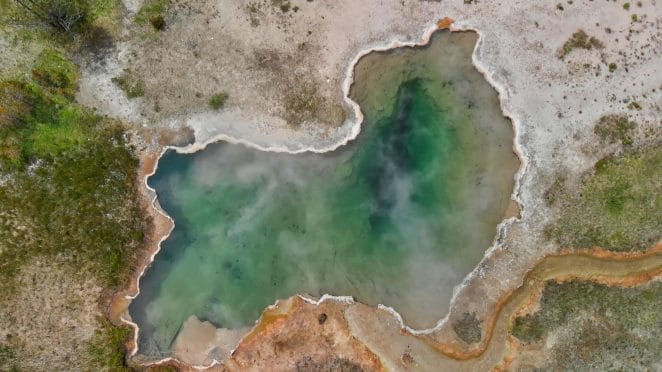
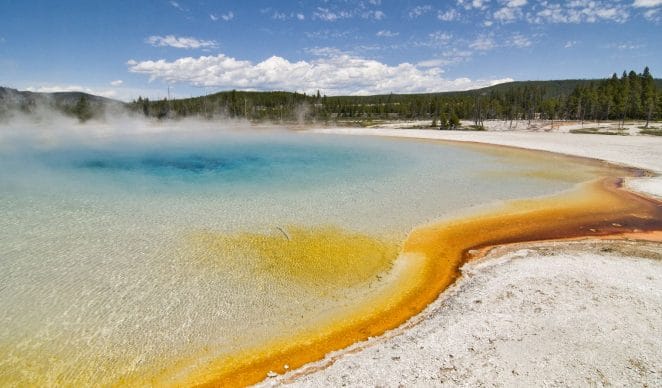
Did You Know?
- Located in Yellowstone National Park in Wyoming, U.S., the Yellowstone Caldera is one of the world’s most famous super volcanoes. Another name for the Yellowstone Super volcano is “explosive volcano” since it is thought to have the capability to conduct a very intense eruption.
- The world’s largest hydrothermal area is the Yellowstone Caldera, and its super volcano has been erupting for thousands of years.
- Yellowstone is a volcanically active area, so it’s not surprising that it has earthquakes and hydrothermal phenomena. The heating and volcanic activity that is happening beneath Yellowstone is caused by the same forces that generate earthquakes.
- About 174,000 years ago, the Yellowstone volcano erupted and created the West Thumb of Yellowstone Lake. At least 60 smaller eruptions have occurred since then, and the latest of the lava flows of the range (which began around 70,000 years ago) occurred around the 60–80 range.
- Scientists consider the Yellowstone volcano unlikely to explode in the next thousand or perhaps ten thousand years. In more than 30 years of monitoring, scientists have detected no evidence of a pending smaller eruption of lava.
Sources:Wikipedia, nps.gov, usgs.gov





GIPHY App Key not set. Please check settings